22.11.2022
Arianespace Vega C mission set to complete Pleiades Neo constellation
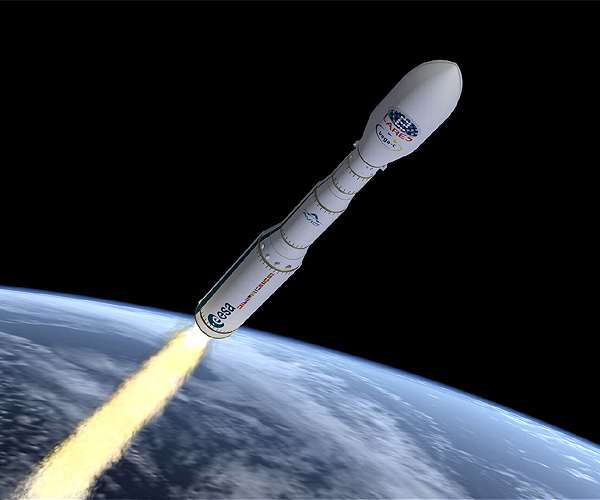
On Thursday, November 24, 2022 at 10:47 pm local time (01:47 am (UTC) on Friday, November 25), Arianespace's first Vega C mission will lift off from Europe's Spaceport in French Guiana, with the 30cm resolution satellites Pleiades Neo 5 and 6. This first commercial flight follows the success, July 13, of Vega C inaugural launch operated by the European Space Agency (ESA).
After liftoff from Europe's Spaceport, the Vega C launcher will fly powered by the first three stages for a little over seven minutes. The third stage ZEFIRO 9 will then separate from the upper composite, which comprises the AVUM+ upper stage and the two Pleiades Neo satellites. The AVUM+ stage will ignite its engine for the first time about nine and an half minutes, followed by a ballistic phase lasting approximately 35 minutes, in order to reach the injection altitude of the first satellite. The AVUM+ stage will then restart its engine for a second burn lasting 2 minutes and 30 seconds to circularize the orbit at an altitude of 629 km before releasing the first satellite.
The next step, 6 minutes and 39 seconds later, will be a 15 seconds RACS boost leading to a new ballistic phase lasting about 36 minutes. It will be interrupted by a third AVUM+ ignition phase lasting exactly 5 seconds, and will be followed by the release of the second satellite at an altitude of 614 km. Around nine minutes later will occur the fourth and last AVUM+ ignition for a period of 61 seconds, which will deorbit the launcher. That will mark the end of mission VV22, one hour, 53 minutes and 55 seconds after liftoff.
Pleiades Neo 5 and 6 fully funded and manufactured by its operator Airbus, are the two final satellites of the Pleiades Neo constellation. The first one, Pleiades Neo 3, has been successfully orbited by Vega Flight 18 on April 28, 2021, and the second one, Pleiades Neo 4, by Vega Flight 19 on August 16, 2021. Built using the latest Airbus' innovations and technological developments, the constellation allows to image any point of the globe, several times per day, at 30cm resolution.
Highly agile and reactive, they can be tasked up to 15 minutes before acquisition, and send the images back to Earth within the following hour. Smaller, lighter, more agile, accurate and reactive than the competition, they are the first of their class whose capacity will be fully commercially available. Thanks to these state-of-the-art satellites, each step of the acquisition and delivery cycle offers top-level Earth observation services now and going forward for the next ten years.
Vega C, which stands for Consolidation, has been developed to better respond to customers' needs based on the lessons learned from the first decade (2012-2022) of Vega operations. The launcher has been upgraded with more powerful first and second stage Solid Rocket Motors, bigger AVUM tanks and with a larger fairing that significantly increase payload mass (up to 2,350t in SSO - Sun-Synchronous Orbit) and double allowable volume.
Quelle: SD
+++
Arianespace’s first Vega C mission to complete Pléiades Neo constellation for Airbus Defence and Space
- Arianespace’s upcoming Vega C launch, scheduled for November 24, will orbit Pléiades Neo 5 and 6, thus completing the new Airbus Defence and Space’s Earth Observation constellation.
– After the successful Vega C inaugural flight in July 2022, flight VV22 marks the beginning of Vega C operational phase, under the responsibility of Arianespace.

On Thursday, November 24, 2022 at 10:47 pm local time (01:47 am (UTC) on Friday, November 25), Arianespace’s first Vega C mission will lift off from Europe’s Spaceport in French Guiana, with the 30cm resolution satellites Pléiades Neo 5 and 6. This first commercial flight follows the success, July 13, of Vega C inaugural launch operated by the European Space Agency (ESA).
After liftoff from Europe’s Spaceport, the Vega C launcher will fly powered by the first three stages for a little over seven minutes. The third stage ZEFIRO 9 will then separate from the upper composite, which comprises the AVUM+ upper stage and the two Pléiades Neo satellites. The AVUM+ stage will ignite its engine for the first time about nine and an half minutes, followed by a ballistic phase lasting approximately 35 minutes, in order to reach the injection altitude of the first satellite. The AVUM+ stage will then restart its engine for a second burn lasting 2 minutes and 30 seconds to circularize the orbit at an altitude of 629 km before releasing the first satellite. The next step, 6 minutes and 39 seconds later, will be a 15 seconds RACS boost leading to a new ballistic phase lasting about 36 minutes. It will be interrupted by a third AVUM+ ignition phase lasting exactly 5 seconds, and will be followed by the release of the second satellite at an altitude of 614 km. Around nine minutes later will occur the fourth and last AVUM+ ignition for a period of 61 seconds, which will deorbit the launcher. That will mark the end of mission VV22, one hour, 53 minutes and 55 seconds after liftoff.
Pléiades Neo 5 and 6 fully funded and manufactured by its operator Airbus, are the two final satellites of the Pléiades Neo constellation. The first one, Pléiades Neo 3, has been successfully orbited by Vega Flight 18 on April 28, 2021, and the second one, Pléiades Neo 4, by Vega Flight 19 on August 16, 2021. Built using the latest Airbus’ innovations and technological developments, the constellation allows to image any point of the globe, several times per day, at 30cm resolution. Highly agile and reactive, they can be tasked up to 15 minutes before acquisition, and send the images back to Earth within the following hour. Smaller, lighter, more agile, accurate and reactive than the competition, they are the first of their class whose capacity will be fully commercially available. Thanks to these state-of-the-art satellites, each step of the acquisition and delivery cycle offers top-level Earth observation services now and going forward for the next ten years.
Vega C, which stands for Consolidation, has been developed to better respond to customers’ needs based on the lessons learned from the first decade (2012-2022) of Vega operations.
The launcher has been upgraded with more powerful first and second stage Solid Rocket Motors, bigger AVUM tanks and with a larger fairing that significantly increase payload mass (up to 2,350t in SSO – Sun-Synchronous Orbit) and double allowable volume. The launcher also better meets the specific needs of small spacecraft, thanks to its improved SSMS (Small Spacecraft Mission Service) dispenser and to its AVUM+ that will allow seven re-ignitions. Vega C can thus achieve three different orbits for its multiple payloads on the same mission, instead of the two previously possible with Vega.
Vega C development program has been managed by ESA. It associates 12 of Member States of the Agency. Avio Spa (Colleferro, Italy) is the industrial prime contractor for both launch vehicle and interfacing ground infrastructure. Avio is also responsible for campaign operations and preparation of the launch vehicle up to lift-off. Avio hands over a “ready to fly” rocket to Arianespace, which sells the Vega C, defines the missions’ requirements, validates its flight worthiness, and operates it from Europe’s Spaceport in French Guiana. During launch campaigns, Arianespace works closely with CNES, the French space agency and the launch range authority at the European Spaceport in Kourou, who is notably looking after the satellite preparation facilities besides being responsible for the protection of populations.
The launch at a glance:
- 344th launch for the Arianespace launcher family (307th launch from CSG).
- 4th launch of Arianespace in 2022.
- Pléiades Neo 5 and 6 will respectively be the 139th and 138th Airbus Defence and Space satellites to be launched by Arianespace.
- Pléiades Neo 5 and 6 will respectively be the 120th and 119th satellites launched by a launcher of the Vega family.
Quelle: arianespace
----
Update: 26.11.2022
.
Flight VV22: Postponement
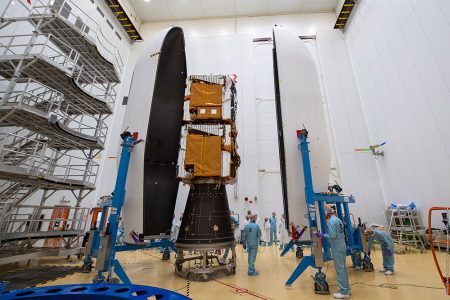
Due to a defective equipment that needs to be replaced on the launcher, Flight VV22 – initially scheduled for November 24, from Europe’s Spaceport in French Guiana – is being postponed.
The Vega C launch vehicle and the two Pléiades Neo satellites are in safe conditions.
A new launch date, in December, will be shared as soon as possible.
About Arianespace
Arianespace uses Space to make life better on Earth by providing launch services for all types of satellites into all orbits. It has orbited over 1,100 satellites since 1980. Arianespace is responsible for operating the new-generation Ariane 6 and Vega C launchers, developed by ESA, with respectively ArianeGroup and Avio as industrial primes. Arianespace is headquartered in Evry, near Paris, and has a technical facility at the Guiana Space Center in French Guiana, plus local offices in Washington, D.C., Tokyo and Singapore. Arianespace is a subsidiary of ArianeGroup, which holds 74% of its share capital, with the balance held by 15 other shareholders from the Ariane and Vega European launcher industry, and ESA and CNES as censors.
Quelle: arianespace
----
Equipment defect delays first commercial Vega C flight
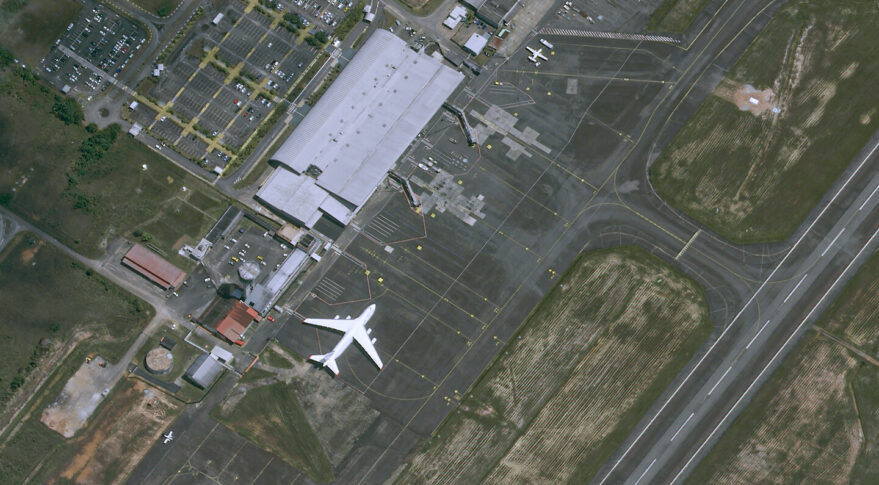
TAMPA, Fla. — Arianespace said Nov. 25 it is delaying the first commercial flight for Europe’s upgraded Vega C rocket by nearly a month to replace defective equipment.
The company discovered the defect on the medium-lift rocket as it was being armed in Kourou, French Guiana, to launch the final two satellites for Airbus’ Pléiades Neo Earth-imaging constellation Nov. 24.
Vega C and the high-resolution Pléiades Neo 5 and 6 satellites are in a safe condition, Arianespace said in a short statement.
“In order to replace the equipment, the upper composite of the launcher will be taken back to the payload preparation facilities and the payload fairing will be opened for the intervention,” the company added.
The upper composite comprises the satellites and the AVUM (Attitude and Vernier Upper Module) stage that uses a liquid-propellant engine built by Ukrainian company Yuzhmash.
Arianespace said the mission is now targeting a launch Dec. 20.
The company launched two other Pléiades Neo satellites in separate missions last year with an earlier iteration of the Vega launch vehicle.
Vega C debuted in July, launching an Italian physics satellite and six cubesats in a non-commercial mission managed by the European Space Agency.
Arianespace updated its manifest following the Vega C delay to bring forward the last mission for Ariane 5 this year by one day to Dec. 13.
The Ariane 5 is slated to launch two C-band replacement satellites for Intelsat and a spacecraft for Eumetsat, Europe’s meteorological satellite agency.
Following this mission, two more heavy-lift Ariane 5 rockets would remain before Europe’s next-generation Ariane 6 launcher is slated to take up the baton in late 2023.
Quelle: SN
----
Update: 21.12.2022
.
Flight VV22 failure: Arianespace and ESA appoint an independent inquiry commission
Arianespace announced yesterday, December 20, the failure of Flight VV22 carrying Pléiades Neo 5 & 6 satellites.
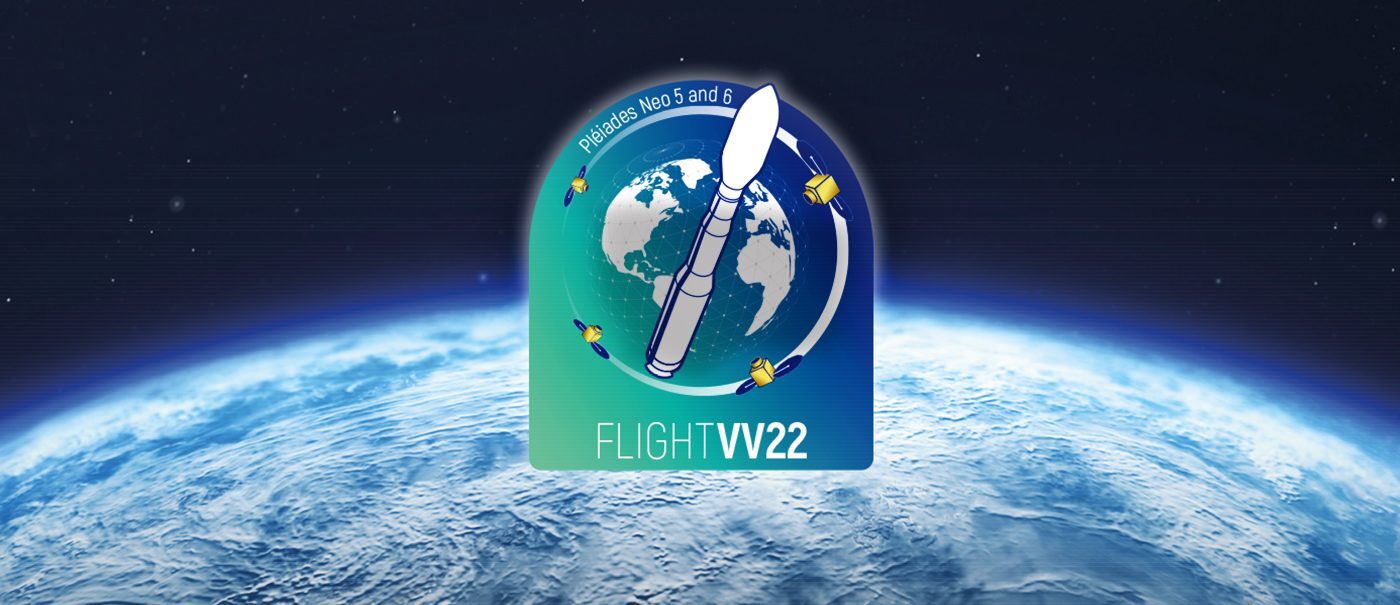
The Vega C launch vehicle lifted off as scheduled on December 20, 2022 at 10:47 pm (local time in French Guiana). The lift-off, the mission and the separation of the first stage (P120C) were nominal. Following the nominal ignition of the second stage’s (Zefiro 40) engine around 144 seconds after lift-off, a decrease in the pressure was observed leading to the premature end of the mission. Under standard procedure, the order of destruction of the launcher was given by CNES, the launch safety authority; no damage to persons or properties occurred.
Arianespace and the European Space Agency (ESA) immediately decided to appoint an independent inquiry commission. This commission is tasked with analyzing the reasons for the failure and defining the measures fulfilling all requisite safety and reliability conditions to allow the resumption of Vega C flights. Composed of independent experts, the commission will work with Avio, Vega C launch system prime contractor.
The inquiry commission is co-chaired by the Inspector General of ESA and the Chief Technical Officer of Arianespace. More information will be shared as soon as the Commission will have progressed in its investigations.
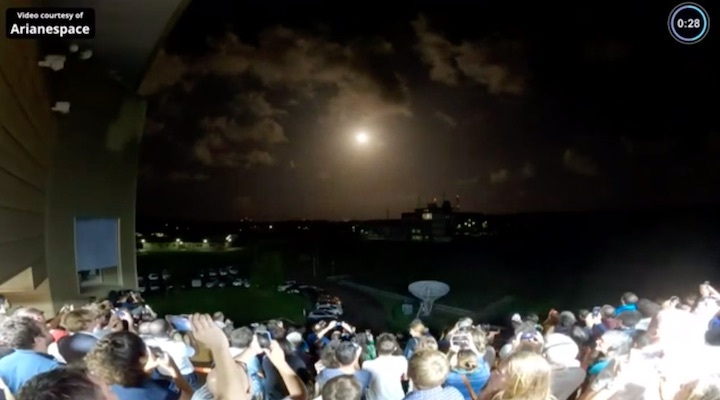
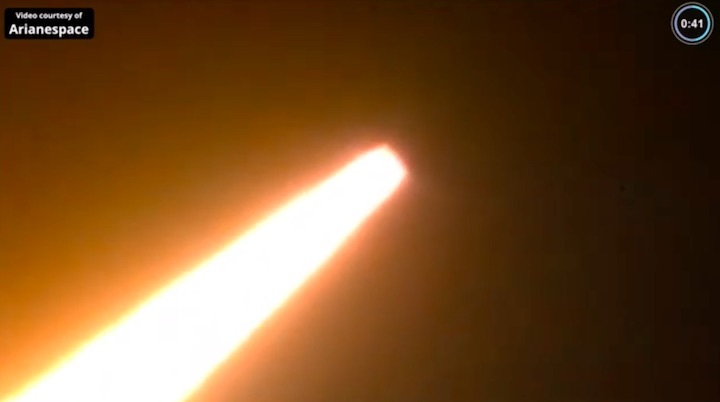
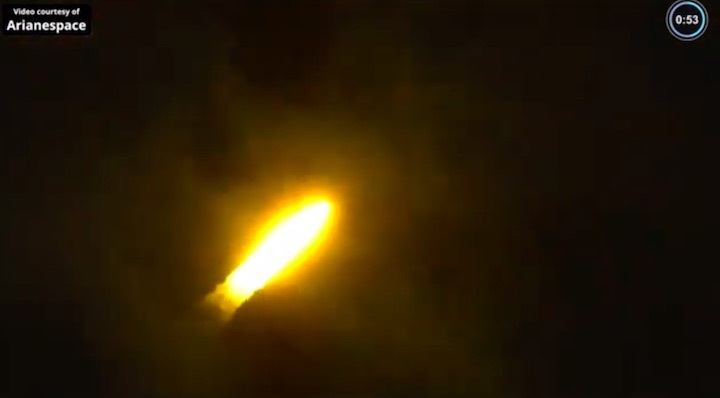
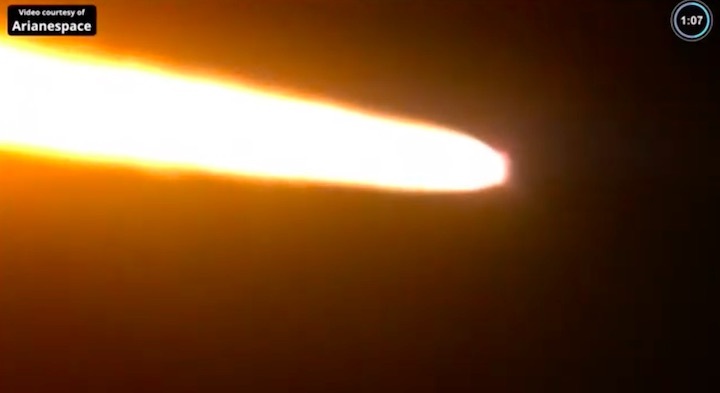
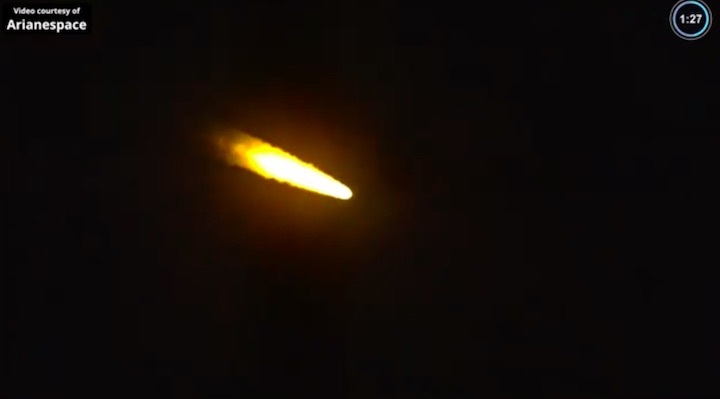
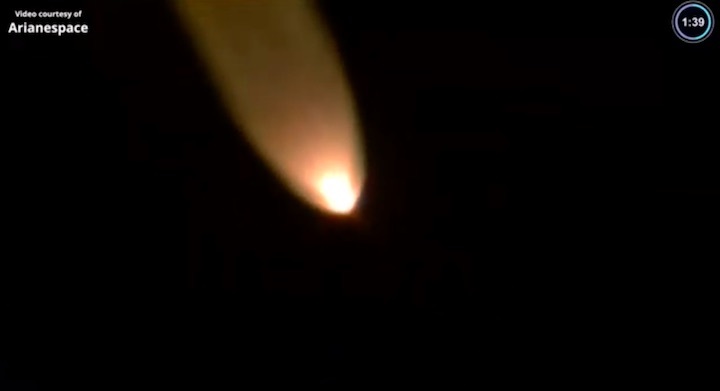
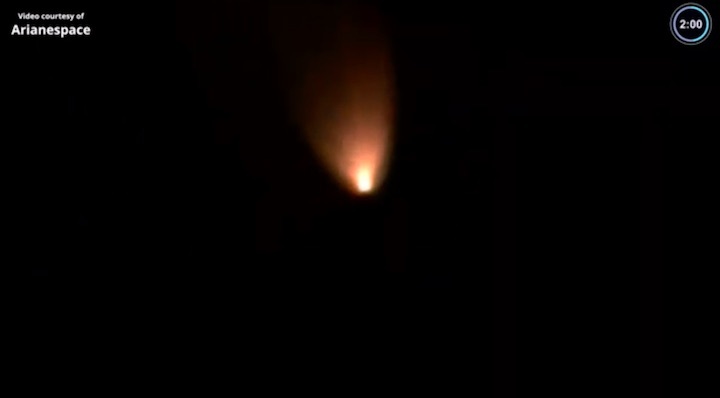

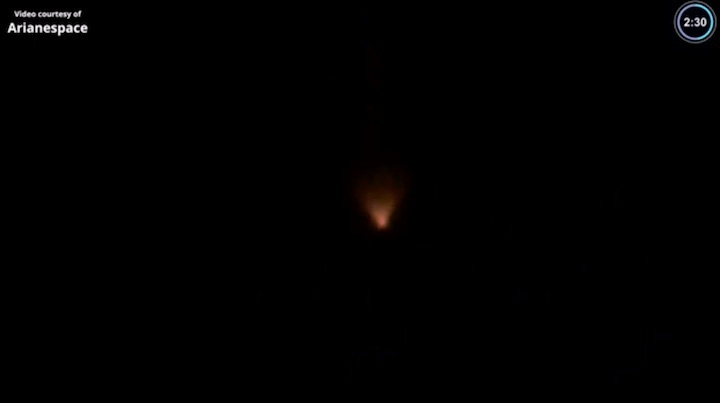
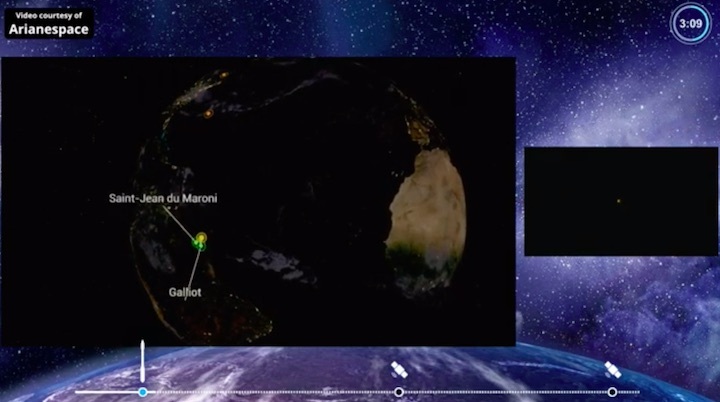
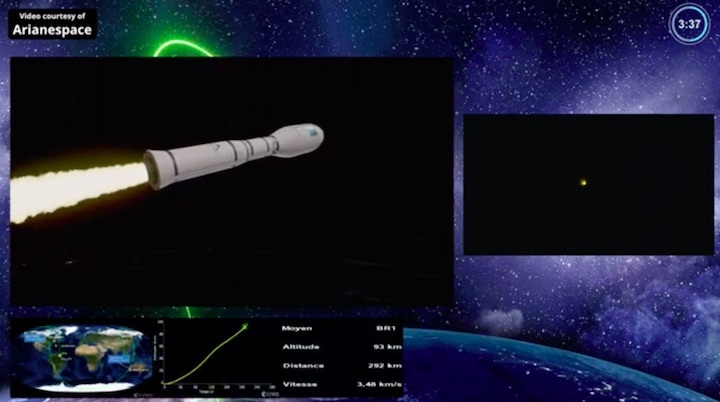
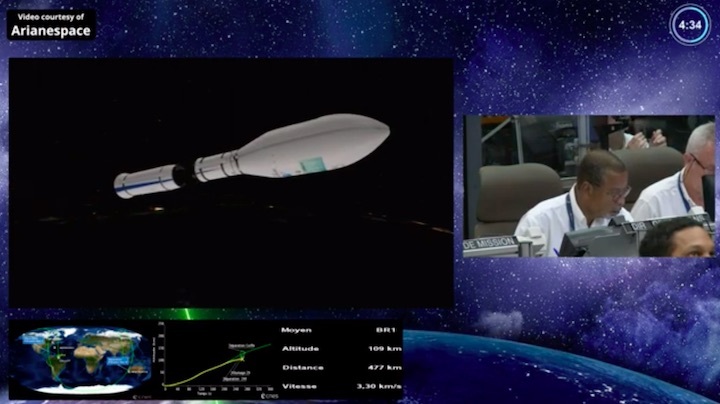
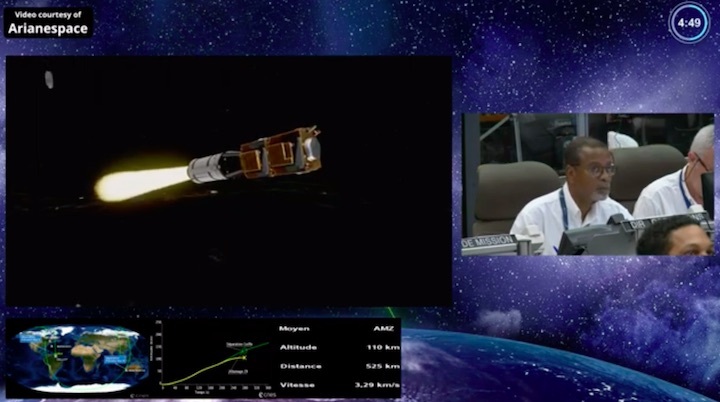
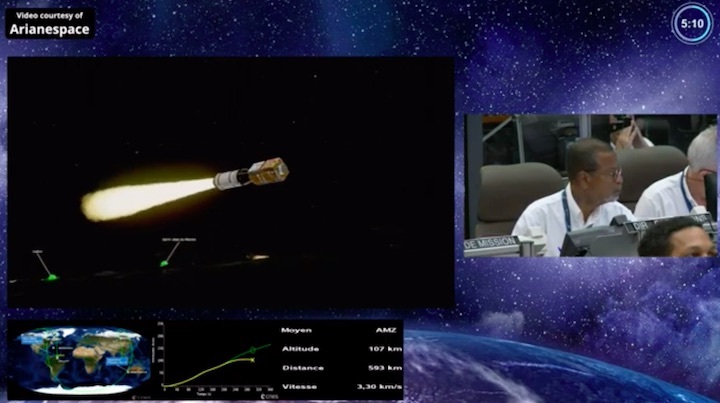
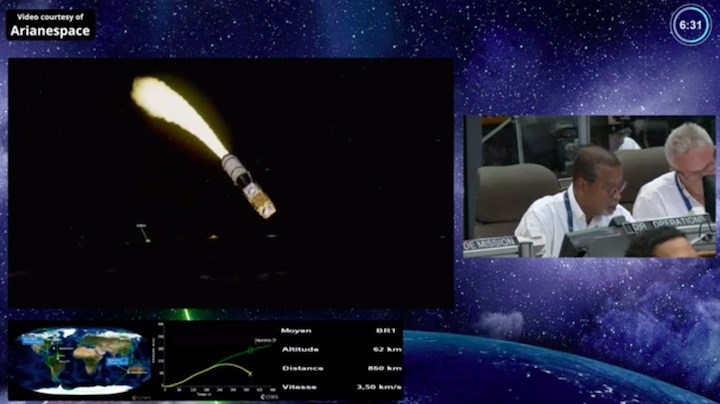
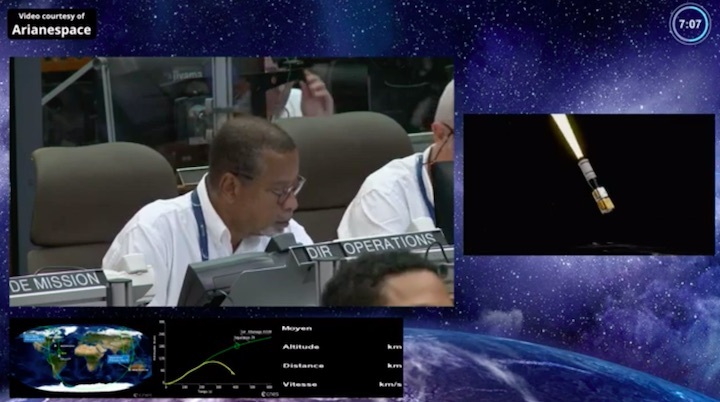

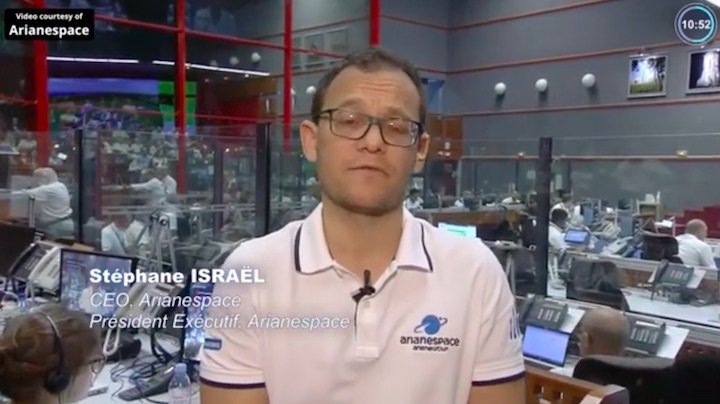
Quelle: arianespace

